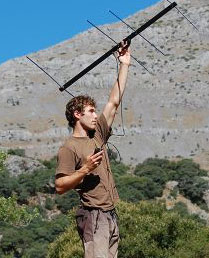 Doctor in Biology from the University of León. He is currently employed as a postdoctoral researcher in charge of the project “Forest management for the promotion of connectivity and availability of brown bear habitat in the Cantabrian mountain range: methodological developments and spatially explicit proposals – GEFOUR” of the National Plan I+D+I.
Doctor in Biology from the University of León. He is currently employed as a postdoctoral researcher in charge of the project “Forest management for the promotion of connectivity and availability of brown bear habitat in the Cantabrian mountain range: methodological developments and spatially explicit proposals – GEFOUR” of the National Plan I+D+I.
He began his research in studies on the effects of fragmentation and alteration of forests on the conservation of forest organisms, as well as in the application of this knowledge to sustainable forest management. His current research focuses on the development of habitat selection and landscape connectivity models.
Featured publications
Robles, H. & Ciudad, C. 2012. Influence of habitat quality, population size, patch size and connectivity on patch occupancy dynamics in the middle spotted woodpecker. Conservation Biology 26: 284-293. 
Robles, H., Ciudad, C. & Matthysen, E. 2011. Tree-cavity occurrence, cavity occupation and reproductive performance of secondary cavity-nesting birds in oak forests: the role of traditional management practices. Forest Ecology and Management 261: 1428–1435.
Ciudad, C., Robles, H. & Matthysen, E. 2009. Postfledging habitat selection of juvenile middle spotted woodpeckers: a multi-scale approach. Ecography 32: 676-682. 
Robles, H., Ciudad, C., Vera, R. & Baglione, V. 2007. No effect of habitat fragmentation on post-fledging, first-year and adult survival in the middle spotted woodpecker. Ecography 30: 685-694. 
Robles, H., Ciudad, C., Vera, R., Olea, P. P., Purroy, F. J. & Matthysen, E. 2007. Sylvopastoral management and conservation of the middle spotted woodpecker at the south-western edge of its distribution range. Forest Ecology and Management 242 (2-3): 343-352.
